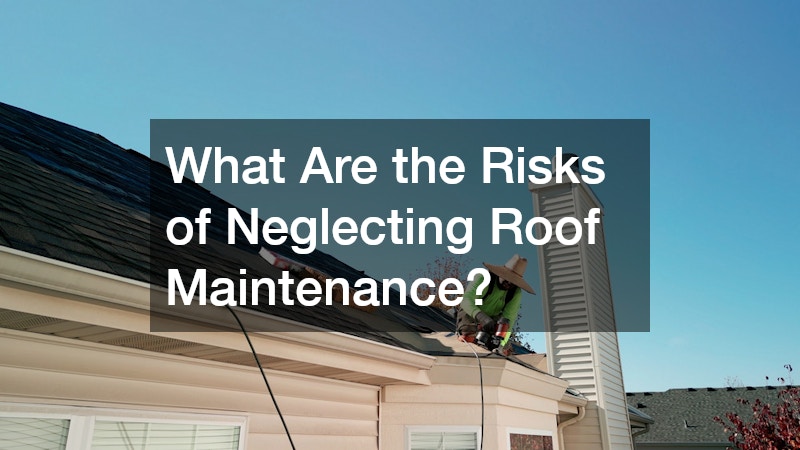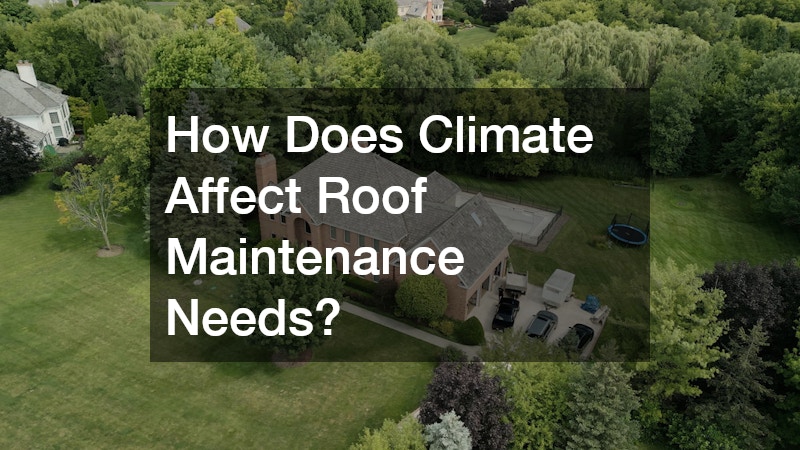When it comes to maintaining your home, the roof often gets overlooked—until it starts leaking or shows visible damage. Yet, regular roofing service is one of the smartest investments you can make to protect your property and save money over time. Routine inspections, minor repairs, and proper care not only prevent costly emergencies but also prolong the life of your roof, improve energy efficiency, and even support sustainable living practices. This article explores why investing in roofing service is worth every penny.
We’ll cover what’s included in a typical service, how it prevents major problems, and why neglecting maintenance can end up being far more expensive. We’ll also dive into tips for hiring qualified contractors, basic DIY tasks, and the impact of climate on your roof’s needs. Whether you have a metal roof, tile, or shingles, and whether you’re considering roof repairs, roof replacements, or re roofing, regular care is essential. Read on to discover how a proactive approach to roofing can save you thousands over the long run.
What Does a Regular Roofing Service Include?

Understanding Standard Procedures
A regular roofing service usually starts with a thorough inspection of your roof’s surface, gutters, flashing, and underlying structure. Contractors will look for cracked shingles, worn flashing, pooling water, moss growth, and other signs of wear. They’ll also check for leaks and assess the condition of roof insulation and ventilation.
Tools and Materials Used
Professionals come equipped with ladders, safety harnesses, moisture meters, sealants, replacement shingles or tiles, and cleaning equipment. Depending on the type of roofing, they might use specialized tools for metal roof maintenance or specific equipment for solar panel cleaning.
Frequency of Visits
For most homes, experts recommend a roofing service at least once a year, ideally before or after extreme weather seasons. For properties with a metal roof or solar panels, bi-annual checkups may be more appropriate due to the unique materials and equipment involved.
How Can Regular Roof Maintenance Prevent Costly Repairs?
Identifying Early Warning Signs
One of the main benefits of regular roof repair and maintenance is catching problems early. Minor issues like cracked tiles, small leaks, or loose flashing are much cheaper to fix than replacing large sections of the roof after years of neglect.
Addressing Small Issues Quickly
Contractors can perform roof repairs on the spot during a service visit. Fixing small leaks, re sealing joints, and replacing a few tiles or shingles costs a fraction of what full roof replacements or re roofing projects would cost if left unattended.
Case Studies on Cost Savings
Many homeowners who invest in regular roofing service report significant savings over the years. For example, fixing minor leaks for a few hundred dollars each year is far less expensive than paying tens of thousands for structural damage, mold remediation, and full roof replacements later.
Is Regular Roofing Service Worth the Investment?
Comparing Costs: Services vs. Repairs
When you compare the modest cost of an annual roofing service to the potential expense of emergency roof repairs or full roof replacements, the value becomes clear. Regular maintenance spreads out the costs and avoids sudden financial shocks.
Long-term Financial Benefits
By extending the life of your roof and improving energy efficiency, regular care can lower heating and cooling bills, reduce insurance premiums, and even increase property value.
Expert Opinions
Roofing contractors consistently recommend regular service as a preventative measure. According to industry experts, homeowners who invest in routine inspections and maintenance save an average of 30–50% over the lifespan of their roof compared to those who don’t.
What Are the Risks of Neglecting Roof Maintenance?

Structural Damage Risks
Failing to maintain your roof can lead to water infiltration, rotting wood, and weakened structural components. Over time, these problems can compromise the safety of your entire home.
Health Hazards from Mold and Leaks
Leaks create damp conditions that encourage mold growth, which can pose serious health risks to occupants. Regular roof repair helps keep your living space safe and dry.
Insurance Policy Implications
Many insurance policies require proof of proper maintenance. Neglecting your roof can lead to denied claims in the event of damage because the insurer may consider it homeowner negligence.
How Does Regular Maintenance Extend a Roof’s Lifespan?
Factors Affecting Roof Longevity
The materials used, local climate, and frequency of maintenance all affect how long your roof will last. A metal roof, for example, can last up to 50 years with proper care, while asphalt shingles typically last 20–30 years. However, even the most durable materials will deteriorate faster without regular attention. UV rays, wind, and moisture all take a toll over time. Professional roofing service helps mitigate these effects by identifying and correcting minor damage before it escalates.
This proactive care preserves the integrity of your roofing and prevents premature roof replacements. Homeowners who schedule maintenance regularly can maximize the return on their initial investment and ensure their roof remains safe and functional far longer.
Techniques to Enhance Durability
Roofing service includes cleaning debris, resealing joints, tightening fasteners, and applying protective coatings. For homes with solar equipment, maintenance also involves ensuring the panels don’t trap moisture or damage the roof surface. Contractors may also reinforce flashing, improve drainage, and adjust ventilation to extend a roof’s lifespan.
These techniques create a stronger barrier against environmental wear and tear. Regular upkeep prevents minor issues from turning into costly roof repairs and supports the overall durability of your roof. Simple yet effective steps, performed consistently, can add years to the life of your roof and save you significant money over time.
Examples from Real-life Scenarios
Homeowners who schedule regular inspections report roofs lasting well beyond manufacturer estimates. One family extended the life of their metal roof by 15 years thanks to consistent upkeep. Another homeowner avoided roof replacements for over 40 years by investing in bi-annual services and addressing problems promptly.
These real-life examples demonstrate how routine maintenance pays off financially and practically. Contractors frequently encounter roofs in surprisingly good condition because the owners prioritized inspections and minor roof repairs early. Such proactive care not only saves money but also preserves your home’s structural integrity and value for decades.
What Are the Environmental Benefits of Regular Roof Service?
Energy Efficiency Improvements
A well-maintained roof reflects heat, prevents air leaks, and insulates your home better. This means less energy is required to heat or cool your home, lowering your carbon footprint. When roofing materials are properly cared for, they retain their reflective and insulating properties longer. Contractors can also advise on coatings or upgrades during regular service to further boost efficiency. Over time, reduced energy consumption not only saves on utility bills but also contributes to environmental conservation.
Reducing Waste through Longevity
By extending your roof’s lifespan, you reduce the amount of construction waste that ends up in landfills. Fewer roof replacements mean less waste over time. Every avoided replacement saves thousands of pounds of shingles, flashing, and underlayment from disposal. Sustainability-minded homeowners often choose regular roofing service as part of their effort to live more responsibly. Small maintenance investments today reduce environmental strain tomorrow.
Supporting Sustainable Practices
Many contractors now use environmentally friendly equipment and materials. Regular maintenance ensures that solar systems remain efficient, contributing to a more sustainable household. In addition, roofing service professionals often recommend eco-friendly sealants, coatings, and debris removal techniques. These practices help minimize your home’s ecological impact while maintaining its functionality and safety.
How Do Regular Inspections Help in Getting Insurance Claims?

Documentation and Reporting
Roofing contractors often provide detailed reports and photographs of your roof’s condition, which can be invaluable if you need to file an insurance claim. This documentation serves as proof that the damage wasn’t caused by neglect. In some cases, insurers even require regular inspection records before approving coverage. Keeping up with scheduled roofing service simplifies the claims process and demonstrates your diligence as a homeowner.
Understanding Policy Terms
Professionals are familiar with insurance requirements and can help you navigate the fine print, ensuring you meet your policy’s obligations. They can identify whether specific roof repairs qualify under your plan and advise how to address exclusions. This expertise can save time and prevent costly misunderstandings when dealing with your insurer.
Effective Communication with Insurers
Having a record of regular roofing service and roof repairs shows insurers you’ve done your part, making it easier to get claims approved quickly and fairly. Contractors can also help explain technical findings and advocate on your behalf, increasing the likelihood of a successful and timely resolution.
What Should You Look for When Hiring a Roofing Service?
Qualifications and Experience
Look for contractors with proper licenses, certifications, and experience in the specific type of roofing you have—whether it’s a metal roof, shingles, or solar-integrated systems. Qualified contractors understand best practices for maintenance, roof repairs, re roofing, and replacements. Their expertise ensures that the work is performed safely, efficiently, and to a high standard.
Service Guarantees and Warranties
A reputable company will stand by their work, offering warranties on materials and workmanship. Guarantees demonstrate confidence in their service quality and protect you from unforeseen issues. Always ask what warranties are included before hiring a contractor, as this can save significant expenses down the road.
Customer Reviews and Testimonials
Checking reviews and testimonials can help you choose a reliable contractor who delivers high-quality roof repairs, replacements, and maintenance. Word-of-mouth recommendations, online ratings, and past client feedback all provide insight into a contractor’s reliability, professionalism, and value. Choosing the right company is critical to ensuring your roofing service is effective and hassle-free.
How Can You Perform Basic Roof Maintenance Yourself?
DIY Inspection Techniques
Walk around your home with binoculars to check for missing or damaged shingles, clogged gutters, and moss growth. Look inside the attic for water stains or daylight shining through. Regularly monitoring your roof between professional visits helps catch issues early and reduces the likelihood of major damage.
Tools You’ll Need
Basic tools include a sturdy ladder, gloves, sealant, a hammer, and replacement shingles or tiles. Some homeowners also use simple equipment like a moisture meter. These tools are affordable and help you tackle minor tasks while leaving major repairs to contractors. Being prepared can prevent small issues from escalating.
Tasks to Avoid Doing Yourself
While you can clear gutters and replace a few shingles, major roof repairs, re roofing, and work involving specialized equipment should always be handled by professionals. Without the proper experience and tools, DIY efforts can lead to accidents, voided warranties, or further damage. Trust contractors for complex or risky work.
How Does Climate Affect Roof Maintenance Needs?

Impact of Weather Patterns
Regions with heavy rain, snow, or intense sun put more stress on your roof. Metal roof systems hold up well in extreme conditions, but still require regular checks. In humid climates, moss and algae growth can become a problem. Understanding how weather affects your roof helps you schedule the right services at the right times.
Seasonal Adjustments in Maintenance
Schedule maintenance in spring and fall to address issues caused by winter storms or summer heat. Contractors can adjust their service based on seasonal challenges. This timing ensures your roof is prepared for the harshest conditions and helps avoid costly roof repairs during peak seasons when contractors are busiest.
Special Considerations for Extreme Climates
In areas prone to hurricanes or hail, roofing service may include installing storm-resistant materials and reinforcing structural components. Some contractors also recommend specific equipment to secure roofing materials more effectively. These extra measures improve durability and minimize damage from severe weather events, saving you money and stress in the long run.
Conclusion
Regular roofing service is more than just a routine chore—it’s a critical investment in your home’s future. By preventing costly damage, extending your roof’s lifespan, improving energy efficiency, and supporting sustainable living, it pays for itself many times over.
Through this article, we’ve highlighted what’s involved in roofing service, how it saves you money, and why neglecting it can lead to significant financial and health risks. We also explored how to hire the right contractors, what you can do yourself, and how climate plays a role in maintenance needs.
Whether you’re dealing with a metal roof, considering re roofing, or just want to avoid unexpected roof repairs, the key is to stay proactive. With regular inspections, proper equipment, and trusted contractors, you can protect your home and your wallet for years to come. Don’t wait for problems to arise—invest in regular roofing service today and enjoy peace of mind tomorrow.
